
Asus GeForce GTX 1080 Strix OC Review
Manufacturer: AsusUK price (as reviewed): £754.14 (inc VAT)
US price (as reviewed): $709.99 (ex Tax)
We've already seen both the GTX 1070 and GTX 1060 being given the Asus Strix treatment. Completing Nvidia's GTX 10-series is, of course, the GTX 1080 and naturally that hasn't been overlooked by Asus either. The Strix OC version we have for review here is, as you might expect, priced highly - £750, at the time of writing, which is around £200 more than you could expect to pay for a standard GTX 1080. The Strix brand has never been about standard, however, and the GTX 1080 GPU itself is hardly positioned as one for frugal customers. The card we have here has all the Strix bells and whistles and a heavy core overclock too, so let's take a closer look.
Before we delve right in, however, it's worth mentioning that there are actually three different versions of the GTX 1080 Strix. The first two are the usual culprits; one at stock speeds and this one, the OC edition, with a core overclock applied – that's the strategy for the GTX 1070 and GTX 1060 too. However, for the GTX 1080 Asus has added a third SKU that acts as a middleman, which is referred to as the GTX 1080 Strix Advanced. This too has a factory overclock, but it's lower than this one. This SKU was added after the first two, so doesn't appear to have been part of the initial launch strategy. We suspect that not enough chips were making the cut for the high overclock required in the OC edition, and thus the Advanced edition was created to get more of the GTX 1080 chips into a card that could still be marketed as Strix and overclocked. The Advanced edition is more widely available (again suggesting a shortage of good enough chips) and for a fair bit less than £700 in some places, so there's quite a saving to be made. Just be careful when shopping around and check the product numbers – the Strix Advanced with the lower overclock is the Strix-GTX1080-A8G-Gaming, while this card, the Strix OC, is the Strix-GTX1080-O8G-Gaming.
So, what exactly are those clock speeds? The card ships set to Gaming Mode, where the base clock is 1,759MHz and the boost clock 1,898MHz, but with one click in GPU Tweak II you can set it to OC Mode (which it is fully validated to run at and which we test in), which ups these to 1,784MHz and 1,936MHz respectively. These are pretty much the highest available from what we've seen, matched by a few other premium SKUs but higher than everything else. Going by base clock, this is a hefty 11 percent increase on the reference speed. Unfortunately, Asus hasn't given any love to the memory, leaving it at an effective speed of 10Gbps.
This is a very familiar card by now. It's a beast, frankly – almost 300mm long and 134mm tall, although thankfully still a dual-slot card. It's well built and has an all-black colour scheme which initially appears plain but in reality is anything but thanks to the RGB lighting on the front fascia and the attractive metal backplate. This lighting is controlled through the Aura software – we're still waiting on an integrated app that combines overclocking with functions like this, but it's still nice to know you can match this card to any colour scheme.
Asus upgrades the display outputs, swapping one DisplayPort 1.4 out for a second HDMI 2.0, which allows VR users to have a headset connected at the same time as a HDMI display – we like this idea, especially for the GTX 1080 where VR makes a lot of sense.
The single 8-pin PCI-E power connector from the reference design is here, but is joined also by a second 6-pin connector, and this will be more than enough to power any realistic overclock.
The cooler is the same five heat pipe model we've seen before. The GPU makes full contact with two of the 8mm heat pipes, partial contact with the other two and no contact with the outlying 6mm heat pipe. The pipes feed a massive heatsink comprising multiple aluminium fins. A cooling plate is also used to draw away heat from the memory chips, although two of them are left without any contact, and you also get full direct cooling for the MOSFETs which are covered by thermal pads that link directly to the fins above.
A trio of Asus's Wing-Blade fans take on the duty of cooling everything and, given the layout of the fins, will push most air out towards the motherboard and back into your case. The fans also operate semi-passively, so you can be sure of total silence when the GPU isn't being heavily used.
The PCB is also a pretty familiar sight, although Asus for the GTX 1080 has gone all out with the power circuitry, equipping this card with a hefty 8+2 phase power system, which of course uses its Super Alloy Power II components. The card is also assembled on the Auto-Extreme process, which means everything is fully automated.
One last feature worth mentioning is FanConnect, whereby Asus attaches two side-facing 4-pin fan headers to the PCB, and these can be used to control case fans based on a PWM signal related to the current GPU temperature – pretty nifty if you want to focus airflow at the GPU.
The card comes with a three-year warranty. Given how premium a product it is, a year or two more would be nice as some competitors are now offering this.
Specifications
- Graphics processor Nvidia GeForce GTX 1080, 1,784MHz (1,936MHz boost)
- Pipeline 2,560 stream processors, 160 texture units, 64 ROPs
- Memory 8GB GDDR5X, 10Gbps effective
- Bandwidth 320GB/sec, 256-bit interface
- Compatibility DirectX 12, Vulcan, OpenGL 4.5
- Outputs/Inputs 2 x DisplayPort 1.4, Dual Link DVI-D, 2 x HDMI 2.0b
- Power connections 1 x 6-pin PCI-E, 1 x 8-pin PCI-E, top-mounted
- Size 298mm long, 134mm tall, dual-slot
- Warranty Three years

MSI MPG Velox 100R Chassis Review
October 14 2021 | 15:04


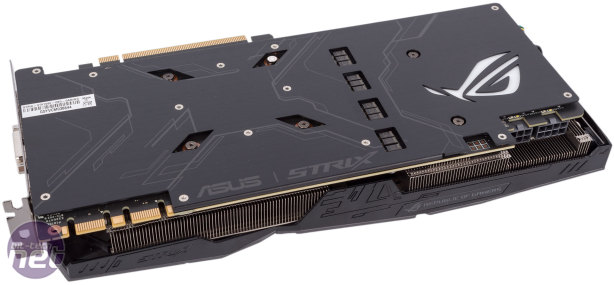


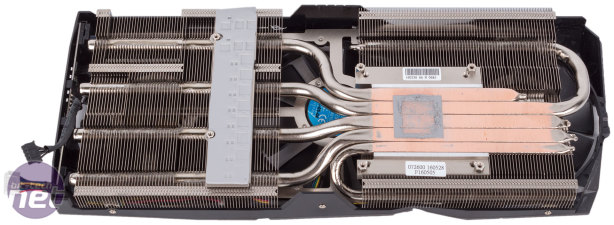
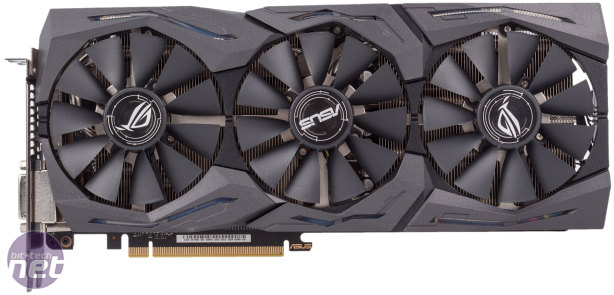
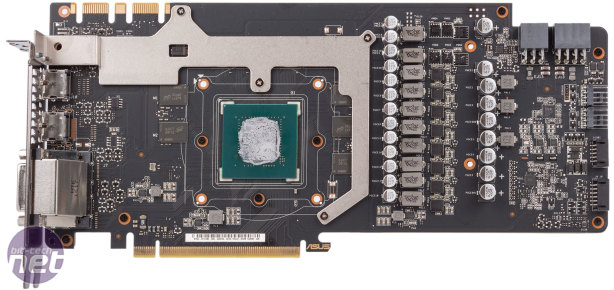
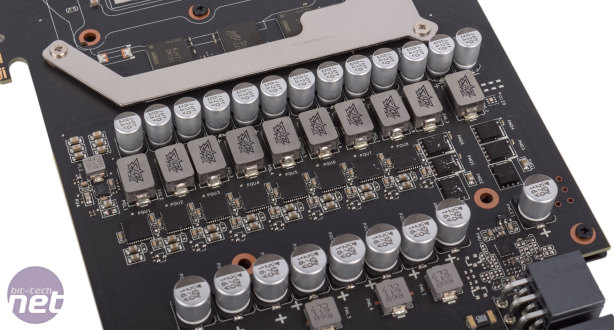








Want to comment? Please log in.